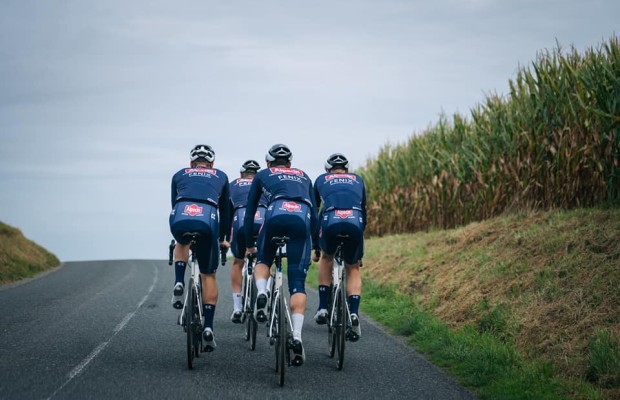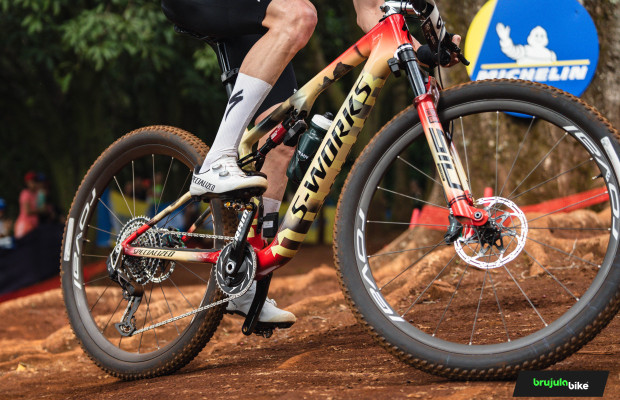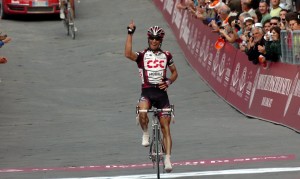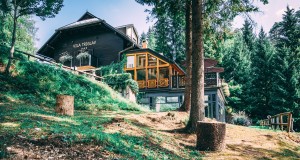Professional cyclists are changing altitude training camps for hotels with hypoxic rooms
In the 2022 preseason, time trialist Victor Campenaerts and promising classics rider Florian Vermeesch, from the Lotto-Soudal team, checked into a resort in Denia, spent the night at the height of Mount Teide, and in the morning, went to train at sea level.
Magic? No, it's what the new Syncrosfera in Alicante offers, and other similar establishments, which are creating a controversial trend in the peloton. Because, more and more, professional cyclists are swapping altitude training camps for hotels with hypoxia rooms.
Considered doping in countries like Italy or Norway, but allowed in many others, they are becoming increasingly popular. Want to know how they work?

Choose the altitude you want today
RECOMENDADO

The cyclist's patience: how long, gentle training sessions build your best season

Tips for cycling in the rain

25 cycling gifts ideas to get it right

When do helmets have to be changed? Do they have an expiration date?

Some reasons to stay away from the road in winter

S-Works: what does it really mean and where does Specialized's most exclusive label come from?
The concept of hypoxic chambers, which allow reproducing high-altitude conditions by reducing the oxygen content in the air (and increasing red blood cells), is certainly curious, although not particularly new. They began to popularize in the early 2000s, but generally, until now, it was a kind of plastic tent that covered the athlete's bed.
Three years ago, we told you that Mathieu Van der Poel used one. Campenaerts himself has frequently used them, and it is said that during the 2020 lockdown, he even slept at a simulated altitude of 10,000 meters, where there is so little oxygen that it poses a health risk.
But, in statements to the Belgian newspaper Het Nieuwsblad, the Lotto-Soudal rider assured these days that the hotel is much more comfortable: "When you sleep in a hypoxia chamber, you have to put a urinal next to the bed, so you don't have to leave the plastic if you need to go to the bathroom." Here, not only is the service at the same level as the rest of the room, but the duo (later joined by another pro from the same team, Brent Van Moer) can even eat at 3,000 meters. "We have four rooms, and we use one as a living room, to spend more time at a higher altitude," said the current Hour Record holder to the Belgian media Sporza.

The altitude is controlled with a screen, just like air conditioning in any hotel. "Normally, I simulate about 3,000 meters, but if we've had a very hard day of training, I lower it to 1,500 so that my body can rest better. You can't do that on Mount Teide. You can't just, after training, say: okay, today I sleep halfway up the mountain," he pointed out in Het Nieuwsblad.
Obviously, these 'altitude hotels' are designed to replace training camps in places like Sierra Nevada, the Canary Islands, Colombia, or Rwanda, where the Lotto-Soudal team had planned to go. And they offer certain advantages over these naturally elevated sites; especially because, in recent years, the trend has been to sleep at altitude and train at lower levels. Most cyclists drive down to Granada from Sierra Nevada to ride their bikes, and Alejandro Valverde doesn't even sleep at the top anymore, but halfway up, at around 1,600 meters.

Kolobnev and Valjavec, former cyclists and hoteliers (at altitude)
The brilliant idea of Syncrosfera, in addition, is to present itself as a wellness resort for high-level athletes, with its own clinic, pool, physiotherapy services, biomechanical study, VO2 Max test... And all this, in the Alicante coast, where most international professional cycling teams hold their preseason training camps in these winter months.
In fact, the UAE Emirates team of Tadej Pogacar has also stayed at this hotel (although, strangely enough, the structure claims that none of the riders used the hypoxia rooms), and the Alpecin-Fenix team of Van der Poel and the Groupama-FDJ team of Thibaut Pinot are planning to stay there. Belgian media even talk about Real Madrid and Barcelona having reservations for the coming months, although there doesn't seem to be any confirmation of this.
Behind this business is a well-known figure in the cycling world: the Russian Alexandr Kolobnev. A domestique for Joaquim Rodríguez at Katusha, he was a notable cyclist: winner of the first edition of Strade Bianche (when it was still called Monte Paschi Eroica), second in the World Championships of 2007 and 2009, bronze medal in Beijing after Davide Rebellin was stripped of his medal for doping... Although what seems to be most remembered about him is that Liege-Bastogne-Liege in 2010 where it is rumored that Vinokourov offered him 150,000 euros to let him win (something that went to court and was never proven, it must be said). Retired in 2016, he decided to open this hotel in Denia.

By the way, another establishment with hypoxia rooms has existed for years in the mountains of Slovenia, very close to the border with Austria, and it is also run by a former cyclist. This is Villa Triglav, which the Italian newspaper La Repubblica once referred to as the 'Grand Hotel Doping'; a reference to the case in which its owner, Tadej Valjavec, was involved in 2009. He was one of the first Slovenian cyclists we knew (along with Andrej Hauptmann), and he entered the top 10 of the Tour and Giro before retiring in 2010.
For now, however, hypoxia chambers or rooms are allowed by the World Anti-Doping Agency (WADA). In 2006, the ethics committee of this organization proposed banning them considering that they "probably go against the spirit of sport," but ultimately decided not to take that measure. Countries like Italy or Norway consider them doping. But, since they are legal in Spain, France, Belgium, or the Netherlands, their use among professionals is becoming more widespread. Are we facing a new paradigm in cycling, or will the presence of something as visible as Kolobnev's hotel in our country make WADA reconsider the matter?